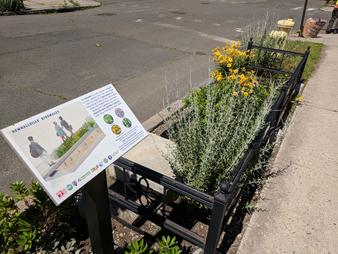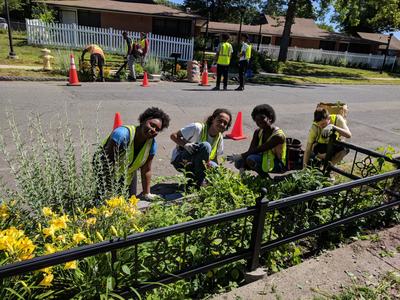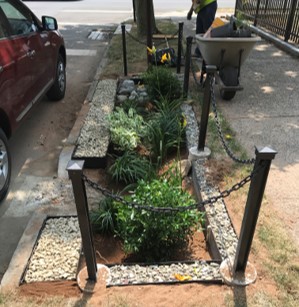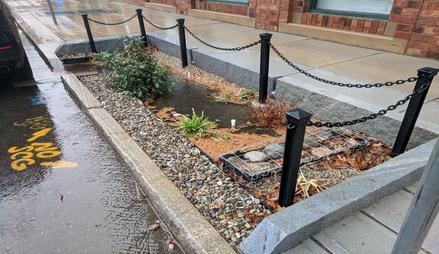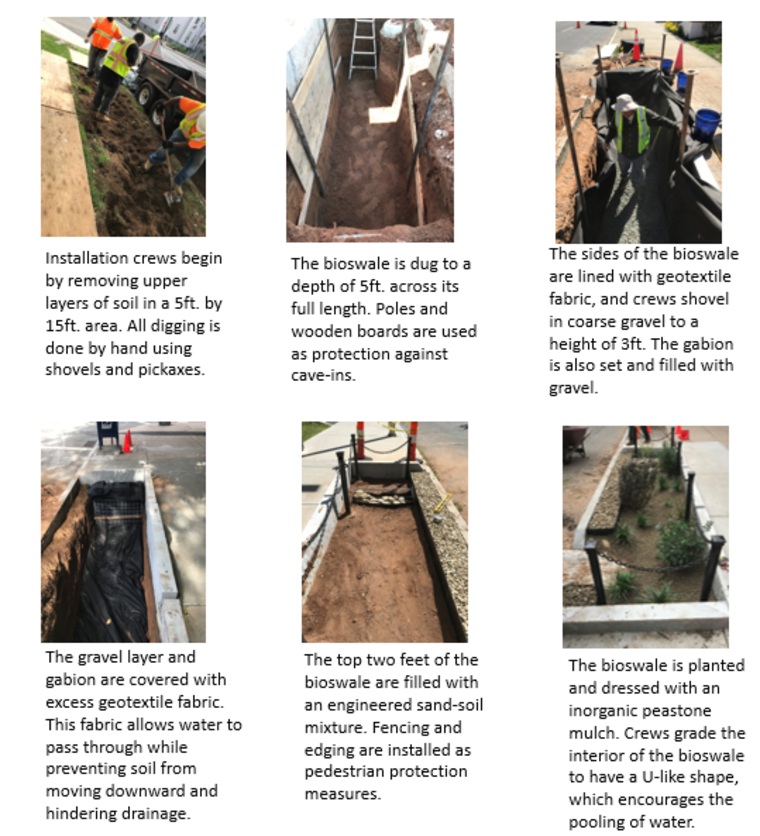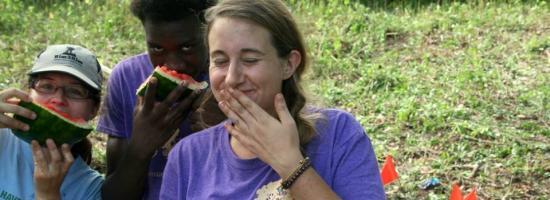
Green Infrastructure
Green infrastructure is a general term used to describe water management strategies that harness and utilize natural features and processes. The EPA defines green infrastructure as “a cost-effective, resilient approach to managing wet weather impacts that provides many community benefits.” Green infrastructure solutions can take many forms, including rainwater harvesting, rain gardens, bioswales, green roofs, street trees, living shorelines, and much more. When used in conjunction with more traditional “gray infrastructure” – sewers, storm drains, pumping systems and water treatment plants – green infrastructure can help reduce flooding, limit pollution, and recharge aquifers in a way that minimizes cost and construction demand while providing a number of additional community benefits.
URI and Green Infrastructure
In an effort to address issues of localized flooding, downstream pollution, and long-term climate change resilience, the City of New Haven is exploring and investing in a number of green infrastructure solutions. Among these solutions is the installation of roughly 200 bioswales throughout the downtown area, the specific goals of which are to:
URI has partnered with the City of New Haven, EMERGE Connecticut, Inc., and the Yale School of Forestry & Environmental Studies to help lead the construction and management of many of these bioswales. To date this partnership has installed over 70 bioswales throughout downtown New Haven, providing employment opportunities to nearly two-dozen recently incarcerated men and women. When taken collectively, constructed bioswales are expected to absorb and filter more than 5.6 million gallons of stormwater runoff annually, which is equivalent to 8.5 Olympic-sized swimming pools.
The bioswale project partnership, as well as earlier collaborations with Common Ground High School and the Greater New Haven Water Pollution Control Authority, was awarded Harvard’s prestigious Roy Family Award for Environmental Partnership in fall 2018. This work has been made possible by funding support from the National Fish and Wildlife Foundation.
What is a Bioswale?
While it may look like an ordinary street-side planter, a bioswale is an engineered planted area specifically designed to collect runoff from the street and sidewalk – much like a storm drain. Unlike a storm drain, however, the bioswale retains and helps clean this water through natural processes of infiltration and plant uptake. This water is then stored in the aquifer instead of running off into the Sound.
As water flows down the street following a storm or snowmelt event, it enters the bioswale through a curb cut. The tub-like shape of the bioswale causes this water to pool, allowing some to be absorbed by surrounding plants. The rest of the water moves down through the soil and is filtered, eventually reaching the water table and joining the groundwater supply. In this way, a single bioswale can manage more than 75,000 gallons of water each year! The diagrams below illustrate several key features that allow each bioswale to perform these functions effectively.
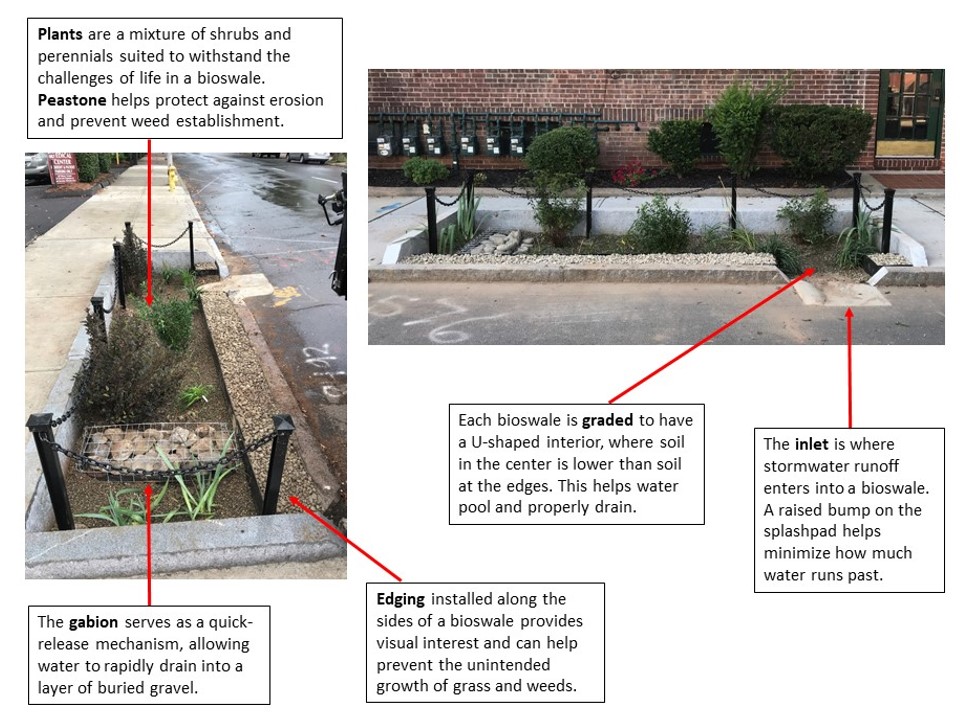
Learn more
Birth of a Bioswale
Bioswale construction is a multi-step process, and involves the coordinated efforts of several different teams. Before construction can begin, potentially suitable sites are identified and prioritized based on a combination of localized flooding concerns, proximity to existing storm drains, location within the floodplain, existing utilities, and pedestrian safety. Outreach to adjacent property owners also happens during this phase. Once a site is confirmed, construction crews cut and remove any existing concrete, install granite edging, and create an inlet in the existing street curb. The digging phase can then begin.
Current Research
Yale F&ES faculty and students conduct active research on the bioswales, stormwater runoff prevention, and infiltration rates. Click here for more information.
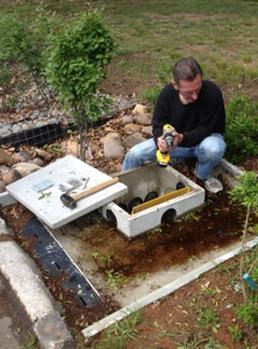
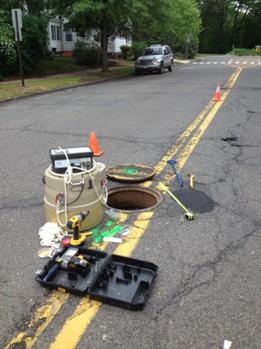
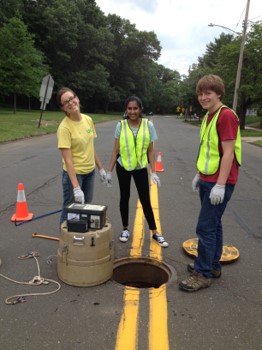
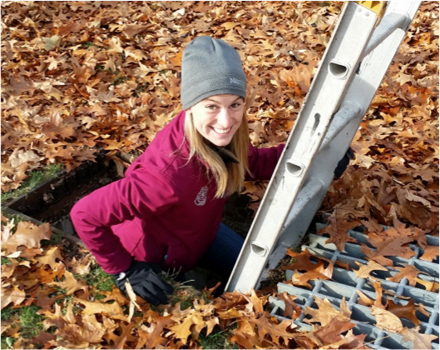
Community Engagement
Our approach to green infrastructure management aims to engage the local community as much as possible. Through direct contact with adjacent property owners, local businesses, and places of worship, we conduct outreach and involve the community whenever possible. Feedback and concerns are used to help guide siting, planting, and maintenance work. Following installation, URI provides adjacent residents and property owners with detailed information on bioswale functionality and long-term maintenance.
Other Resources
https://www.epa.gov/green-infrastructure
https://www.grownyc.org/openspace/green-infrastructure-toolkit/bioswales
https://www1.nyc.gov/site/ddc/resources/features/2017/08/bioswales.page
https://www1.nyc.gov/site/ddc/about/press-releases/2017/pr-022317-coastal-res.page
